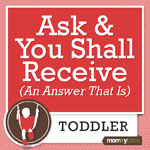
I read all the websites about how a baby is supposed to develop during the first year, but it leaves me more confused than anything. How do I know what my baby should be doing physically – and when I should worry?
I hear this question a lot, and with good reason. Not everyone comes to parenthood with experience around babies, so you may not know how development typically unfolds. Sometimes even when you’ve been around young children, it’s different when it’s your own. As I said in the last installment of this series, I’m hesitant to give parents month markers for when a milestone should be accomplished because every child develops differently.
That said, one of the basic tenets of my work is that an educated parent is an empowered parent. Please remember that a child’s natural inclination, temperament, birth trauma, exposure and experiences – amongst others – can have an effect on when a child reaches these stages.
The other concept that is central to the work that I do, is that if you have a question, reach out. Asking a simple question can ease your mind, and if the pediatrician or child development specialist shares your concern, you can get started early with any support your child may need.
Sitting Up (Unassisted) As your baby gets stronger (head, neck, core, eyesight), typically between 6 and 8 months, she’ll try to change positions to interact with people and materials. This is similar to her motivation to roll over. In fact, many children push up to sit, after they have rolled over. At first they may have some difficulty with balance. Not unusual.
When you start to see that wobbly sitting position, it’s usually a good idea to make sure your child is on a mat or soft surface, or stay close by with a steadying hand, making sure there is nothing she or he can bump into when falling over. With time, children will start to put a hand down or use their legs to straighten themselves back out if they start to tip over.
As her strength continues to grow, her balance will as well. This is a great time to put toys up a little higher. You can hold her at eye level, tilt her up against a couch or prop her on a pillow. I love to start with larger, soft balls at this age. This is also the age at which I encourage parents to drop the crib mattress to the lowest level for baby’s safety.
Crawling After your baby is sitting more securely and there are more exciting objects to see (and taste) around the room, he’ll want to get over to where those objects are. Many babies start by putting their hands down in front of them while they are sitting or pushing to all fours (hands and knees) from laying on their belly.
The first step to crawling (although some children do skip this one) is known as creeping. A baby on all fours will rock back and forth in that position. From there, they’ll go mobile (usually 7-10 months). And a whole new world opens!

Now is an important time to think about childproofing your home. Get down on your child’s level and look around for scenarios that may be enticing but dangerous. Now you can spread toys out a bit and watch as your child explores his larger environment.
Pull To Stand This next stage of development is another important reason to childproof your home. As baby gets stronger she or he will start to pull up on couches, cabinets, chairs, and cribs. It’s important to make sure that these objects in a baby’s environment remain secure when that happens. Pulling to stand generally shows up between 9 and 11 months and is another natural inclination for children when they are ready.
As we did when the child starting sitting up, now is a good time to shift the position of toys again, to the seat on a couch, the top of an ottoman or low table. Playing in the standing position is fun.
What’s coming next? Cruising around furniture, holding with one hand to bend down and reach for a toy with the other, letting go for a few seconds, and then walking. Watch out world!
Looking for some great activities to enjoy with your 6-12 month old? Check out this article. Please remember, this is only a guide. In my work, I advise parents that if their child is 2-3 months outside the upper limit of one of these time ranges, and they haven’t already spoken with their pediatrician, they should reach out.
No one knows their child as well as a parent. If at any point you are concerned about your child’s development, never hesitate to ask.

Read Next | 7 Healthy Bedtime Snacks To Help Your Kids Fall Asleep Fast
Like what you read? JOIN the Mommybites community to get the latest on FREE online classes, parenting advice, events, childcare listings, casting calls & raffles, and our Parents With Nannies Facebook group. SIGN UP NOW!
Have general questions about development, behavior, or parenting? “Ask and You Shall Receive” through Mommybites.com or email me at [email protected].
Dana Rosenbloom has a master’s degree in Infant and Parent Development and Early Intervention and has been working with children and families for over 10 years. Dana’s Kids offers home, school and web-based services in the areas of parent education, play and behavior therapy, special education services, parent workshops and support groups, and professional development. To learn more about Dana and Dana’s Kids, and to subscribe for her FREE newsletter, please visit www.DanasKids.com. You can also follow Dana on Facebook: www.facebook.com/
The views and opinions expressed on this blog are purely the blog contributor’s. Any product claim, statistic, quote or other representation about a product or service should be verified with the manufacturer or provider. Writers may have conflicts of interest, and their opinions are their own.



